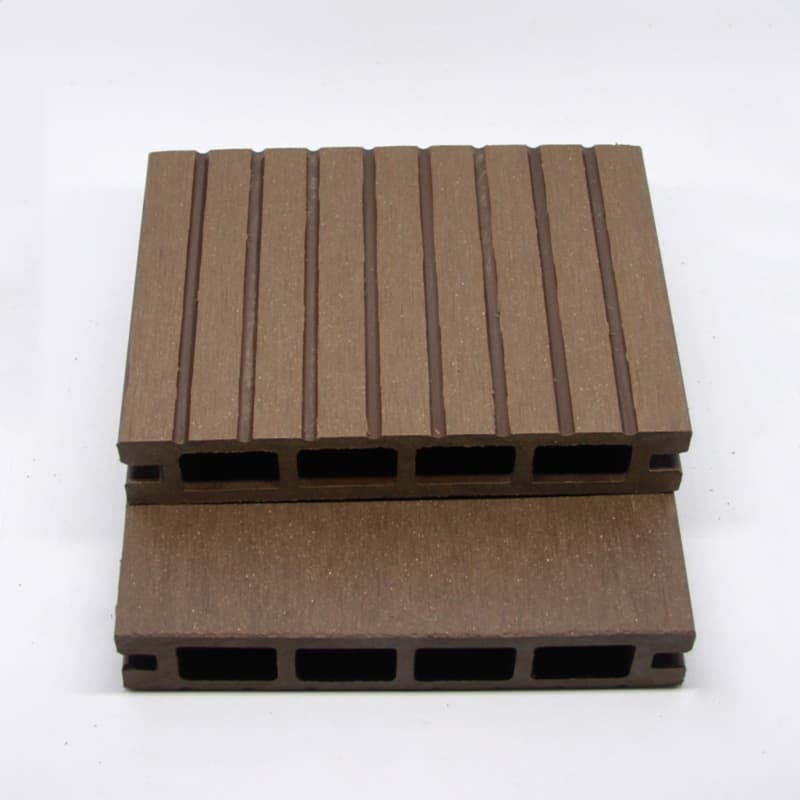WPC Supplier Composite sheets, then again, either don’t experience. The ill effects of or have alleviated many of these issues. Rather than PVC plastic, most composite sheets utilize polyethene or polypropylene, both of which are more dimensionally stable than PVC, with extension coefficients of 59.4 and 72-90 individually. Fortification brings down it further, with fiberglass-strengthened polypropylene having a straight development coefficient of just 32. The development of composite shifts, however when the proportion of wood flour to plastic transcends 40%, composite deck sheets turn out to be significantly more dimensionally steady and unmistakably inflexible.
This unbending nature is a noteworthy favourable position of composite decking contrasted with PVC. A long-haul issue with plastic decking is that it makes a bouncy deck. This implies there is sufficient flex in the deck sheets that the deck’s surface discourages with each footfall. This was an issue with original composite decking, remains an issue with WPC Supplier current low-quality composite decks, and is articulated with PVC decks. The arrangement is as a rule to draw the deck joists nearer to each other. This is not as much as perfect since it requires utilizing more materials to assemble. The substructure and raises the expenses of building the deck.
PVC has leeway over composite in dampness obstruction and decay opposition. And enables dampness to encroach there is nothing there to ingest the water or to cause decay.
Notwithstanding, PVC is as yet subject to a similar potential for harm from caught water solidifying as composite. Also, if PVC decking starts splitting because of sun presentation, this can give way to stream to start harming the structure of the sheets.
 Composite Decking Vs. PVC: How the Boards Perform on a Deck
Composite Decking Vs. PVC: How the Boards Perform on a Deck
Composite sheets, then again, either don’t experience the ill effects of or have alleviated many of these issues. Rather than PVC plastic, most composite sheets utilize polyethene or polypropylene, both of which are more dimensionally stable than PVC, with extension coefficients of 59.4 and 72-90 individually. Fortification brings down it further, with fiberglass-strengthened polypropylene having a straight development coefficient of just 32. The development of composite shifts, however when the proportion of wood flour to plastic transcends 40%, composite deck sheets turn out to be significantly more dimensionally steady and unmistakably inflexible.
This unbending nature is a noteworthy favourable position of composite decking contrasted with PVC. A long-haul issue with plastic decking is that it makes a bouncy deck. This implies there is sufficient flex in the deck sheets that the deck’s surface discourages with each footfall and springs up when the foot is lifted. This was an issue with original composite decking, remains an issue with current low-quality composite decks, and is articulated with PVC decks. The arrangement is as a rule to draw the deck joists nearer to each other. This is not as much as perfect since it requires utilizing more materials to assemble the substructure and raises the expenses of building the deck.
PVC has leeway over composite in dampness obstruction and decay opposition. Since PVC deck sheets are plastic entirely through, regardless of whether the surface of the board is harmed and enables dampness to encroach there is nothing there to ingest the water or to cause decay. Notwithstanding, PVC is as yet subject to a similar potential for harm from caught water solidifying as composite or wooden deck sheets seem to be. Also, if PVC decking starts splitting because of sun presentation, this can give way to stream to start harming the structure of the sheets.
